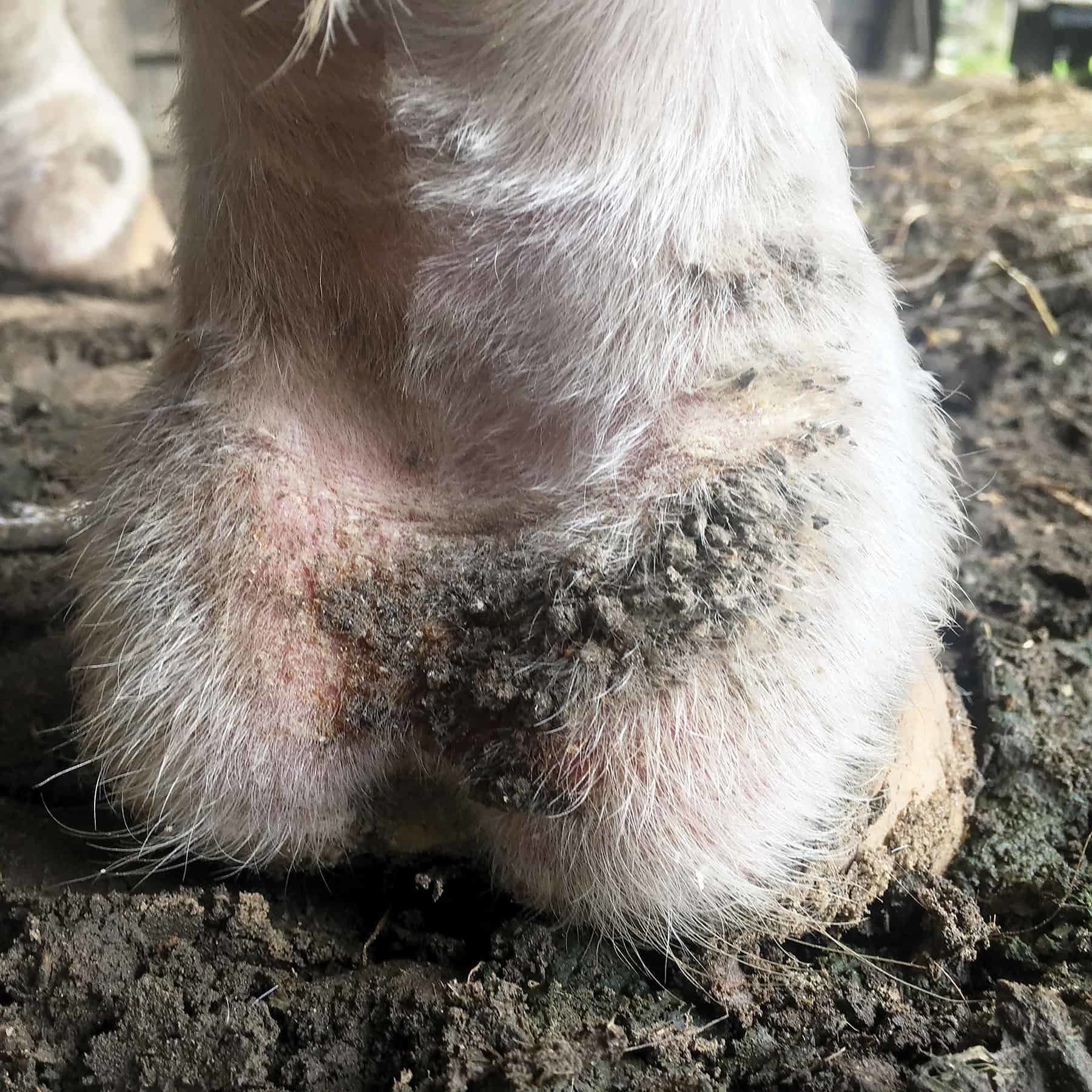As a horse owner, one of the challenges you may face is dealing with various skin conditions that can affect your horse's health and comfort. One such condition is greasy heel, also known as mud fever. While it’s most common in horses with feathers, in wet and muddy conditions, greasy heel can affect any horse. Understanding this condition, how to prevent it, and the best ways to treat it is essential for maintaining your horse’s well-being.
What is Greasy Heel?
Greasy heel is a skin infection that typically occurs on the lower legs of horses, particularly around the pastern and fetlock area. It is often seen during wet weather, especially in muddy environments. It can also occur secondary to parasitism or other underlying skin conditions that disrupt the skin’s protective barrier.
The condition is caused by bacteria, primarily Dermatophilus congolensis, which thrives in moist and dirty environments. These bacteria invade the skin when it is softened by prolonged exposure to moisture, leading to inflammation, scabs, crusts, and swelling. In severe cases, the infection can spread to deeper tissues, causing more significant damage and requiring more intensive treatment. Other infectious agents may also become involved including various bacteria and fungi.
Symptoms of Greasy Heel
- Swelling in the affected area
- Crusty scabs or sores that may ooze a yellow or clear discharge
- Red, inflamed skin that may be warm to the touch
- Hair loss around the infected area
- Lameness if the condition becomes painful
- Foul odour coming from the affected area due to infection
If left untreated, greasy heel can cause long-term damage to the skin and underlying tissues, leading to scarring, permanent hair loss, or even lameness in severe cases.
Causes and Risk Factors
Greasy heel is primarily caused by bacterial infection, but certain factors increase the risk of developing the condition:
- Wet and muddy environment: Horses kept in paddocks with excessive moisture or poor drainage are more likely to develop greasy heel, as the bacteria thrive in these environments.
- Poor hygiene: Lack of proper grooming and cleaning can allow dirt and bacteria to accumulate on your horse’s legs, increasing the risk of infection.
- Excessive leg hair: Horses with long hair around their pasterns or fetlocks are more prone to developing greasy heel, as the hair traps moisture and creates a warm, damp environment that encourages bacterial growth.
- Compromised immune systems: Horses with weakened immune systems or those under stress may be more susceptible to infections, including greasy heel.
Prevention Tips
Preventing greasy heel requires a combination of good management practices and environmental control. Here are some tips to help reduce the risk:
- Maintain clean, dry living conditions: Ensure your horse's living area is kept clean and dry. Good drainage is crucial, as standing in wet, muddy areas for extended periods can increase the risk of greasy heel.
- Regular grooming: Keep your horse’s legs clean and dry by grooming them regularly. Use a soft brush to remove dirt, mud, and debris, especially from around the pasterns and fetlocks, where greasy heel commonly develops.
- Trim excessive hair: If your horse has long hair around the lower legs, consider trimming it to allow for better air circulation. This will help reduce moisture build up and improve the overall health of the skin.
- Monitor for early signs: Check your horse’s legs regularly for early signs of greasy heel, such as mild swelling, scabs, or redness. Catching the condition early can help prevent it from becoming more severe.
Treatment of Greasy Heel
If your horse develops greasy heel, it’s important to address the issue promptly to prevent further complications. Here’s how you can manage the condition:
- Clean the affected area: Gently wash the area with warm water to remove dirt, scabs, and discharge. Be careful not to scrub too harshly, as this can further irritate the skin.
- Dry thoroughly: After cleaning, ensure the area is completely dry before applying any ointments or treatments.
- Topical treatments: Apply topical ointments or creams that contain antibacterial agents, such as Flamazine (silver sulfadiazine), yellow lotion (zinc sulphate solution) or white healer (zinc oxide / Melaleuca).
- Veterinary consultation: If the infection worsens or if your horse is showing signs of pain or lameness, contact us on 07 4982 2552 for further advice and possible oral antibiotics or other treatments.




